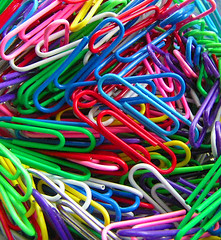Trade shows and exhibitions have some of the highest ROI of any form of marketing. Aside from providing a great arena to meet qualified leads they also offer great opportunities to catch up with the latest developments in your industry. Check out competitors and maybe get a bit of inspiration for your next ground breaking product.
The problem is that trade shows require a large initial investment to get those opportunities and leads, so preparation is vital to ensure you aren’t throwing money away.

Objectives: Why are you going to this event? (hint: the answer isn’t because we can, or everyone else is doing it) Make sure you and your staff know what you want to achieve and plan accordingly, whether it’s to get a record number of qualified leads, great press coverage or an inside look at another industry, create a metric and make sure you have a way to track it. Preferably you should do this stage before you have even chosen an event. You can then pick the event which best fits your objectives rather than tying your objectives to the event.
Training: Staff surely don’t need to be trained just to talk to people? Well, actually yes they do. Good exhibition communication is often a mixt of counselling and acting. Your exhibitors need to be able to listen to the problems of the visitors coming to the stand so that they can offer them solutions, not products. They need to be able to listen sympathetically while hiding the fact they are tired and have been on message nearly all day. Much of the literature around trade shows suggests reps should spend 80% of their time listening and 20% talking.
Training your staff is vital to achieving this mix, and hopefully creating enthusiastic representatives. Depending upon what your budget is you can either hire outside experts to coach your staff on the finer points of exhibiting techniques alternatives a more affordable approach would be set aside an afternoon (at least) before the event to brief your staff. The briefing needs to include any products or services they need to be aware off, proper data capture methods and some practice of talking to visitors.
Consistent messaging: Having a consistent message is a vital part of any marketing and branding effort. Events are no different, and you should make sure that you are using your brand colours and logo’s on marketing literature, display stands and even clothing at a minimum. If there is any time when you are representing your company then sales meetings and trade shows are it.
Clothes are particularly vital when it comes to the message you want your brand to convey. A professional consulting company will probably want to wear suits, with any branding confined to lanyards and maybe ties in the company colours. In contrast a tech start up might prefer the branding opportunities available in a more relaxed approach such as adopting branded polo shirts. Similarly you need to think carefully about any promotional products you offer. For example if you want to promote your green credentials a pile of plastic tchotchkes will look hypocritical at best. A far better approach would be to create a report that can be downloaded from your website using a code only available at your stand. This will make you look both more professional and greener.
Pre-event Marketing: So you have trained your staff well, provided branded material and you have a great looking stand. But does anyone know where to find you, or why they should try? This is where pre-event marketing comes in. You need to tell people that you are going to be at the event and why they should care. While this can be as basic as taking advantage of the show organiser’s pre-event publicity, pushing it on your website, social media and offline marketing material can bring in a huge amount of interest. Try to come up with a promotion that will bring relevant people to your booth like a preview on a new product, a workshop or a chance to talk with an industry expert.
Eating and Sleeping: One thing you cannot do is leave your booth unmanned, but you also can’t expect everyone in your staff to spend all day on it. The simplest and most effective thing to do is arrange a schedule beforehand so that everyone will have at least one chance to sit down grab a bite to east. This will help your stand look professional, as there is no bigger turnoff than seeing a messy stand with discarded food wrappers. If it is at all possible then you should have a minimum of two people on the stand at all times. This will means that there is always someone to cover in case of emergencies and that visitors won’t to have to wait too long to find someone to talk to.
Similarly always book hotels and transport as far in advance as possible. This will not only save you money, it will also mean you can get rooms as close as possible to the exhibition centre. A five minute walk beats an hour long commute any day.
Hopefully this guide should help make any exhibits a success and ensure that you come out of the event with lots of great leads.
About the Author: Written by Daniel Frank on behalf of Nimlok Exhibition Stands
Image: Phil Sexton / Flickr

